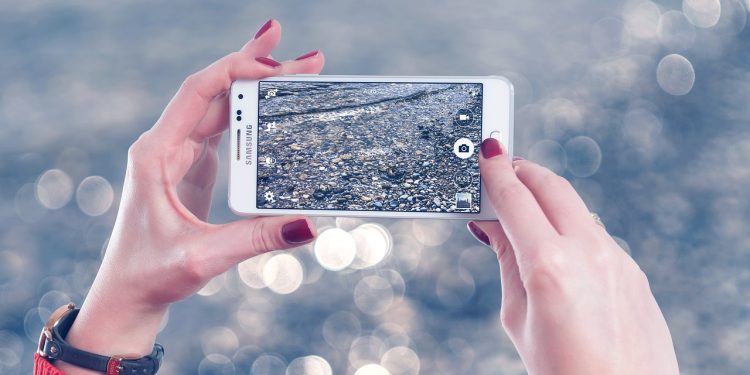Gone are the days when you needed an expensive DSLR camera to take great photos. With the rapid advancements in smartphone technology, nearly everyone now carries a powerful camera in their pocket. But while modern smartphones are packed with advanced lenses and software, capturing truly stunning shots still requires some skill and a good understanding of photography principles. This guide is here to help you master the art of smartphone photography with practical tips and tricks that will transform your everyday snapshots into professional-looking images.
Understanding Your Smartphone Camera
Before diving into specific techniques, it’s crucial to get to know your smartphone camera’s capabilities. Most modern smartphones come with multiple lenses, including wide-angle, ultra-wide, and telephoto options, along with advanced features like Night Mode, portrait enhancements, and even manual settings.
Spend some time exploring your camera app. Familiarize yourself with settings like HDR (High Dynamic Range), which helps you capture more detail in high-contrast scenes, and the different lens options. Learn how to switch between the different modes available, such as panorama, slow motion, and time-lapse, to understand when each one works best. By understanding your camera’s features, you’ll be more equipped to use them effectively and capture a greater variety of shots.
Focus on Composition
Composition is key to great photography, regardless of the equipment used. The rule of thirds is a basic but powerful principle that can greatly improve the balance and aesthetic appeal of your photos. To apply the rule of thirds, imagine your frame divided into nine equal parts by two horizontal and two vertical lines. Positioning your subject along these lines or at their intersections can create a more interesting, well-balanced shot.
Most smartphones have an option to activate a grid overlay, which makes applying the rule of thirds easier. Additionally, look for leading lines—natural lines within the scene that guide the viewer’s eye towards the subject—such as roads, fences, or pathways. Leading lines help add depth to your photos and make them more engaging.
Another great compositional trick is framing. Use natural elements such as archways, windows, or tree branches to frame your subject. This technique not only draws attention to the focal point but also adds context and interest to the shot.
Lighting is Everything
Lighting can make or break a photo, and understanding how to use natural light is one of the best skills you can develop in smartphone photography. When possible, take advantage of natural light rather than relying on your phone’s flash. The golden hours—shortly after sunrise and just before sunset—are ideal times to take photos. The soft, diffused light at these times minimizes harsh shadows and creates a warm glow that adds a beautiful quality to your images.
If you’re shooting during the middle of the day when the sunlight is intense, look for shaded areas or consider backlighting your subject to avoid harsh, unflattering shadows. On the other hand, shooting during overcast days is perfect for portrait photography, as the cloud cover diffuses the light and reduces glare, giving you a nice even illumination.
Experiment with light direction as well. Side lighting can add texture and depth, while backlighting can create interesting silhouettes or add a dreamy quality to your photo. Don’t be afraid to play with shadows; they can add an artistic element and a sense of mystery to your shots.
Make Use of Manual Settings
Most people stick to their smartphone camera’s automatic settings, but exploring manual or “pro” settings can open up a whole new level of creativity. Manual settings allow you to control aspects like ISO, shutter speed, and white balance—just as you would with a traditional camera.
- ISO: This setting controls the camera’s sensitivity to light. Lower ISO settings (100-200) are ideal for bright conditions, while higher ISO settings (400 and above) can be used for low-light situations. Just be aware that increasing the ISO too much can introduce graininess to your images.
- Shutter Speed: Shutter speed controls how long the camera sensor is exposed to light. A fast shutter speed (e.g., 1/1000) will freeze motion, perfect for action shots, whereas a slower shutter speed (e.g., 1/15) can create motion blur, which can be used creatively for a sense of movement or when shooting water and light trails.
- White Balance: This setting adjusts the color temperature of your photos. Using the right white balance can help you capture colors more accurately, whether you’re shooting under natural sunlight or indoor lighting.
Experiment with Depth of Field
One of the most captivating aspects of photography is playing with depth of field—how much of the image is in sharp focus compared to how much is blurred. Most newer smartphones come with a Portrait Mode, which uses software and multiple lenses to create a pleasing background blur, or “bokeh” effect. This mode is excellent for portrait shots and close-ups of objects like flowers, adding a sense of depth and isolating the subject from its background.
For greater control over depth of field, try manually adjusting the focus by tapping on different parts of the screen. This is especially useful when you want to highlight a particular detail or when you’re shooting through objects like fences or leaves, creating a layered effect that draws attention to the subject.
Editing: Bring Your Photos to Life
Taking a good photo is only half the journey; the other half is post-processing. There are a wide variety of mobile editing apps available, and learning how to use them effectively can take your photography to the next level.
- Snapseed: This free app from Google offers a broad range of editing tools, from basics like brightness and contrast adjustments to more advanced features like selective editing and healing. Snapseed’s user-friendly interface makes it accessible for both beginners and more experienced users.
- VSCO: VSCO is popular for its wide array of filters that can give your photos a cohesive, artistic look. It also allows you to fine-tune settings like exposure, temperature, and saturation, making it a great all-around editing tool.
- Lightroom Mobile: Adobe Lightroom’s mobile version provides powerful editing tools and is ideal for those who want to have full control over their photos. It includes professional features like color grading, local adjustments, and advanced lighting correction.
When editing your photos, keep in mind that less is often more. Avoid over-saturating colors or pushing contrast levels too high. The goal is to enhance the photo to reflect the scene as you saw it, without making it look overly processed.
Explore Different Perspectives
One of the easiest ways to make your photos more compelling is to change your perspective. Instead of shooting everything from eye level, try crouching down low, standing on a higher vantage point, or tilting your phone for a dynamic angle. Shooting from unexpected angles can add drama to your photos and reveal aspects of your subject that aren’t always seen.
For example, capturing a tall building from directly below can emphasize its height and grandeur, while getting on the ground to photograph a child or pet can make the image feel more intimate. Don’t be afraid to get creative and explore how different perspectives can dramatically alter the mood and impact of your shots.
Use Accessories to Enhance Your Photography
There are several accessories available that can help you get even more out of your smartphone camera. Consider investing in a tripod, which can be especially useful for night photography or long exposure shots where stability is crucial. A compact, portable tripod makes capturing steady shots easier and allows for more creative compositions.
Clip-on lenses are another great way to expand your smartphone camera’s capabilities. A macro lens can help you take highly detailed close-up shots, while a wide-angle lens can capture expansive landscapes or large group photos. These inexpensive add-ons can add variety to your photography and give you new ways to experiment.
Mastering Night Photography
Night photography can be challenging due to low light, but with a few adjustments, you can still capture impressive shots. Many smartphones now come with dedicated Night Mode, which helps to brighten up dark scenes without adding too much noise. If your phone doesn’t have Night Mode, you can achieve similar effects by using manual settings.
Keep your ISO low to reduce noise and use a slow shutter speed to capture more light. This is where a tripod becomes invaluable, as it will help you keep your camera steady during the longer exposure times needed for low-light shots. Experiment with city lights, light trails, and illuminated buildings to create striking nightscapes.
Capturing Motion with Burst and Slow-Motion Modes
For action shots, timing is everything. Most smartphones come with a burst mode—hold down the shutter button, and the camera will take a rapid series of shots. This is perfect for capturing fast-moving subjects, as you can later pick out the best frame.
Slow-motion video is another creative tool for capturing movement. Whether it’s a friend diving into a pool, a skateboard trick, or even a pet’s playful antics, slowing down the action allows you to appreciate every detail that might otherwise go unnoticed. Just be mindful of lighting—slow-motion video requires ample light to maintain good quality.
Practice, Experiment, and Have Fun
Like any art form, mastering smartphone photography takes practice. Challenge yourself to take photos daily, experimenting with different techniques, lighting conditions, and subjects. The more you practice, the better you’ll get at recognizing what makes a compelling image and how to use your smartphone to capture it.
The best part of smartphone photography is its accessibility. You have a powerful camera with you all the time, and you can capture fleeting moments whenever they happen. Use that to your advantage, explore different genres—whether it’s portraits, street photography, landscapes, or macro—and most importantly, have fun with it. Photography is about seeing the world differently, and with a smartphone in hand, the possibilities are endless.






